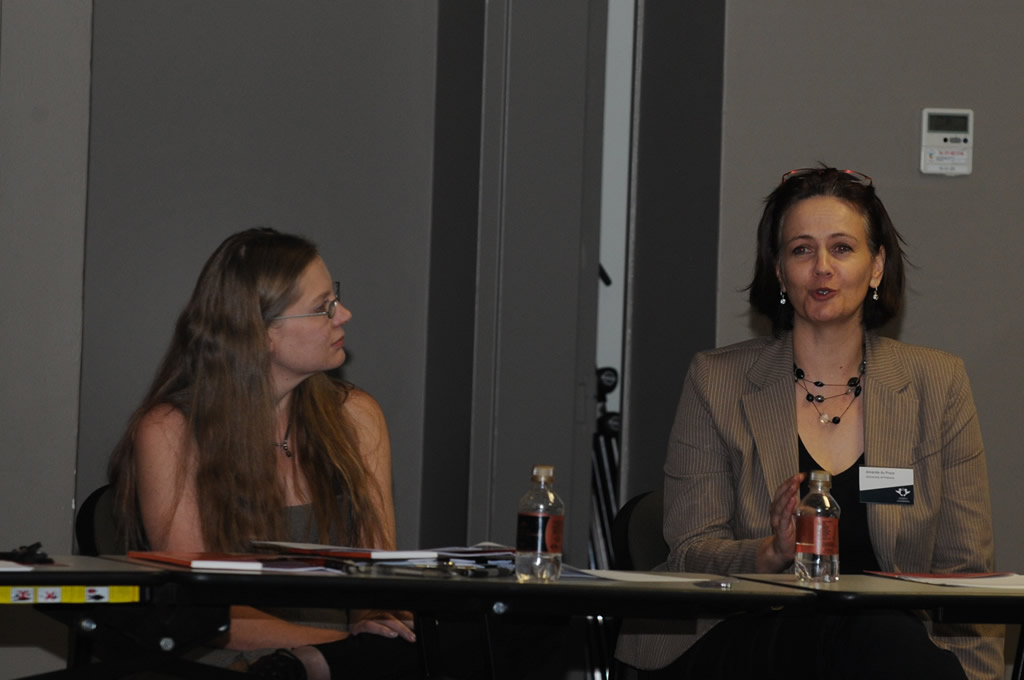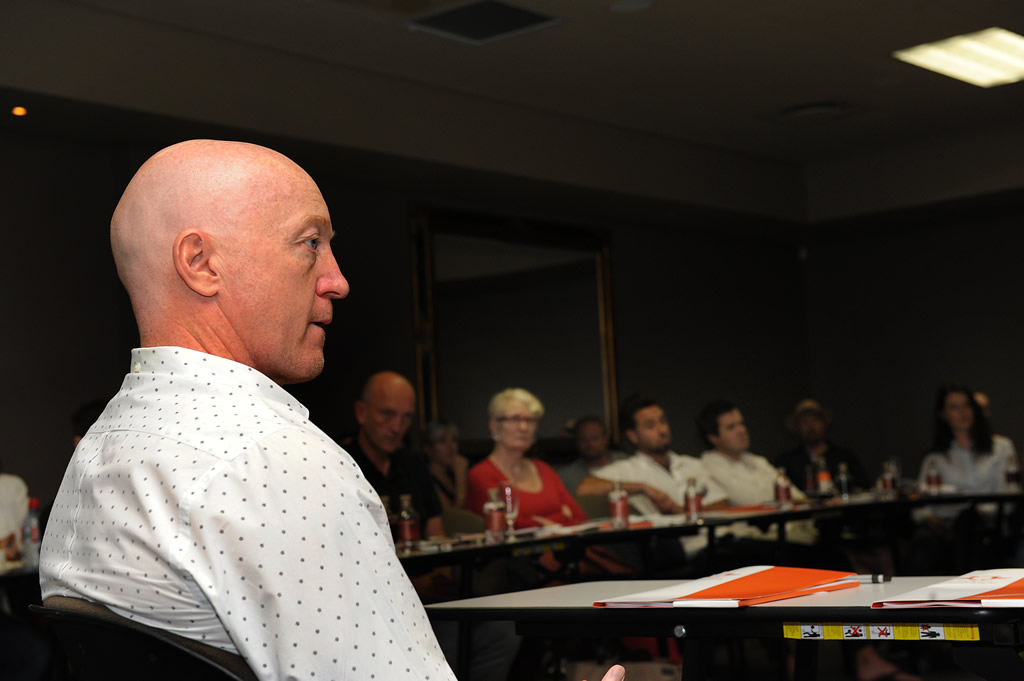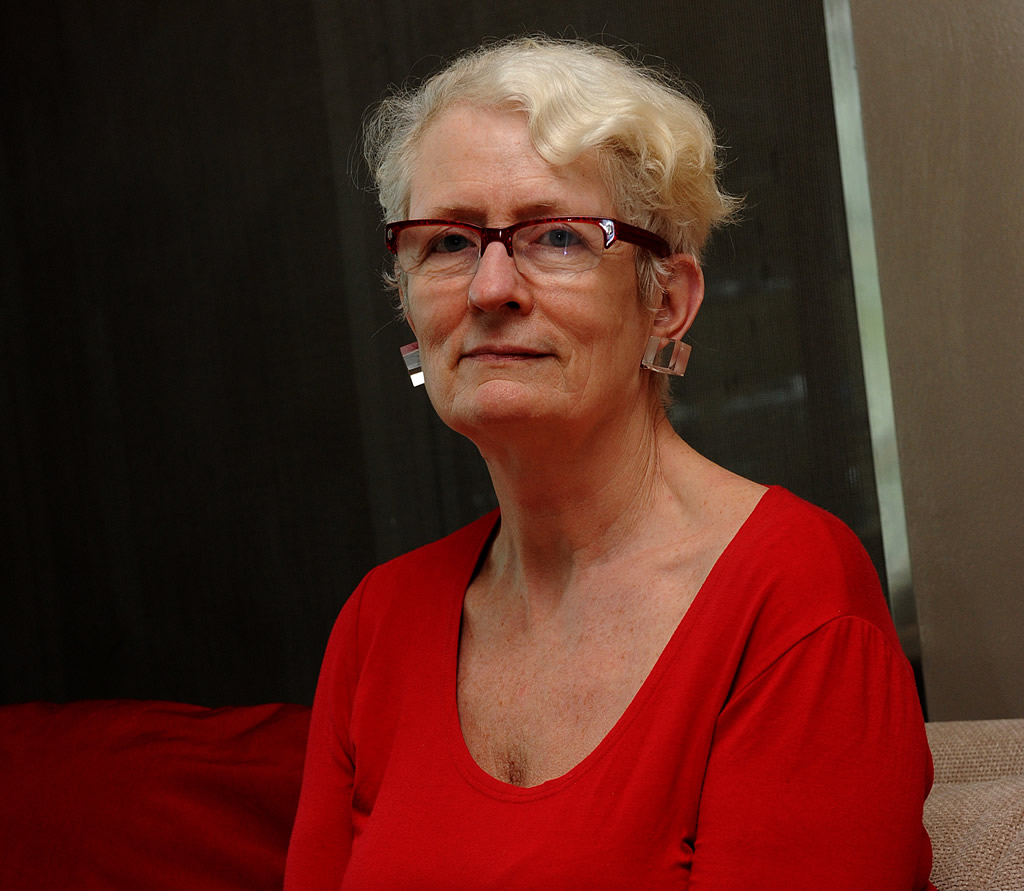SPACE, RITUAL, ABSENCE: THE LIMINAL IN SOUTH AFRICAN ART
10 – 11 March, 2011 | School of Tourism and Hospitality, Bunting Road Campus, University of Johannesburg
Hosted by the Visual Identities in Art and Design (VIAD) Research Centre, the Space, Ritual, Absence: The Liminal in South African Visual Art two-day colloquium took place at the School of Tourism and Hospitality, Bunting Road Campus, University of Johannesburg. It was timed to coincide with the opening of an accompanying exhibition curated by Leora Farber and James Sey, titled Space, Ritual, Absence, running from 10 March-1 April 2011. As additional components of the colloquium, Mieke Bal’s installation Nothing is Missing ran from 10-24 March 2011 at the Jozi Art Lab at Arts on Main and a one-off screening of Bal’s film, A Long History of Madness, made together with Michelle Williams Gamaker, was screened at The Bioscope, Main Street Life, on 9 March 2011.
Academy Professor at the Royal Netherlands Academy of Arts and Sciences, and world-renowned academic, Mieke Bal and Dr Ashraf Jamal of the Department of Visual Art, Rhodes University, were keynote speakers. Other presenters were from a range of institutions, including University of the Witwatersrand, University of Pretoria, Tshwane University of Technology, Rhodes University, University of Johannesburg, University of Cape Town, University of the Western Cape, University of California and University of South Africa.
Bal’s paper, titled ‘Video, migration and heterotemporality: the liminality of time’ probed how video art can contribute to a better understanding of migratory culture through an analysis of selected video works. Conversely, Bal argued that migratory culture helps to engage with video art on a different, more socially engaged level than might be obvious, particularly in terms of temporality.
In his paper, ‘Learning to squander/making meaningful connections in the infinite text of world culture’, Jamal, using Nicholas Bourriaud’s The radicant (2009), charted the function of visual art in the twenty-first century. The key question posed was ‘why it is that globalisation has so often been discussed from sociological, political, and economic points of view, but almost never from an aesthetic perspective?’. Jamal speculated that by shifting the focus to the aesthetic, the solidity of a global cultural economy can be challenged. The upshot of these shifts is a move away from the sterility of multiculturalism – the relative autonomy of reified cultures – towards a global (local-and-generalised) culture in perpetual translation. Key to this shift is the move away from origins and a move towards unforeseen destinations.
Conceptual framework of the colloquium
The concept of the liminal refers to the state of the threshold. That which is liminal exists in an in-between state, not fully realised, fully understood or fully accepted into the socius. Things and beings which exist in a liminal state are properly at the margins, often not accorded a full legal, epistemological or psychological identity. As such they acquire a range of different meanings and functions in society – attracting power, magic, danger and
mystery, but also suspicion and repressive control. Liminal spaces are those in which the normal rules and mores of society are suspended, thus allowing for transformation and new confluences to happen. They are also transit zones such as hotels and airports, where people are moving from one place, and state, to another, and are therefore subject to different rules and controls to those which exist in society. But liminal zones are also spaces of spiritual or social power, which denote a place in which things can happen outside the normal realm of social structure. These range from disputed political territories, to asylums and internment camps, to shrines, caves, seashores and crossroads. Liminal spaces thus can attract dispute and contestation, but can also represent a place in which no political or social action or decision can yet be taken, until the liminal zone has been exited. A good example of this would be the science fictional spaces of the ‘Twilight Zone’ and the ‘Interzone’, or the insane asylum, where, while the inmate cannot have medico-legal or moral status as a full citizen, they also cannot be held responsible for their decisions and actions.
Liminal rituals, similarly, act as a marker of the state between exclusion and inclusion from a social group. The clichéd idea of a ‘rite of passage’ elides the fact that bodies and consciousness exist in a different and suspended state between two social categories when undergoing such rites – they are in effect in an altogether different realm that belongs to the liminal itself. The many rituals marking initiation into adulthood are the prime examples of this perhaps most widespread of liminal phenomena. It is rare however that the liminal state itself is of interest, as it is here – usually what is of consequence is only the fact that it buffers the two states of social exclusion and inclusion. In the case of liminal bodies, the clearest instance of the phenomenon occurs. Liminal bodies are those always caught in a curious state of almost-becoming, a state of absence which is held in place sometimes quite literally, as with the mythological centaur, a being which is both horse and man and also neither. The rights of a body to certain observances and status is held in limbo by the absence, for example, of citizenship in the case of the illegal immigrant, or the absence of clearly attributable, socially-sanctioned gender and sexual object choices in the case of transsexuals, transvestites, bisexuals, and homosexuals (in some instances). Cyborg bodies form another clear subcategory of the luminal form. In the case of bodies therefore, the liminal state is defined by the absence of a full bodily identity which might take different forms.
Click here to download
Farber, L (ed)., & Sey, J (co-ed). 2011. Space, ritual, absence: liminality in South African visual art. Image & Text 17.
Source cited
Bourriaud, N. 2009. The radicant. New York: Lukas & Sternberg.
PROGRAMME:
Click here to download the programme
EXHIBITION:
Space, Ritual, Absence: Liminality in South African Art



